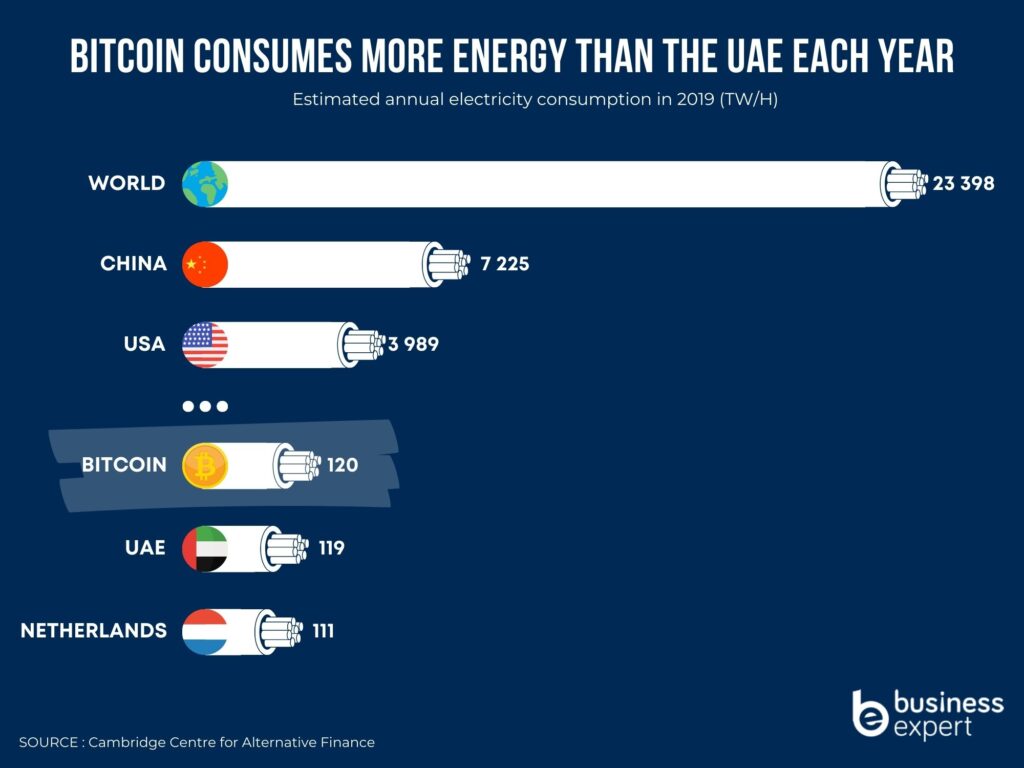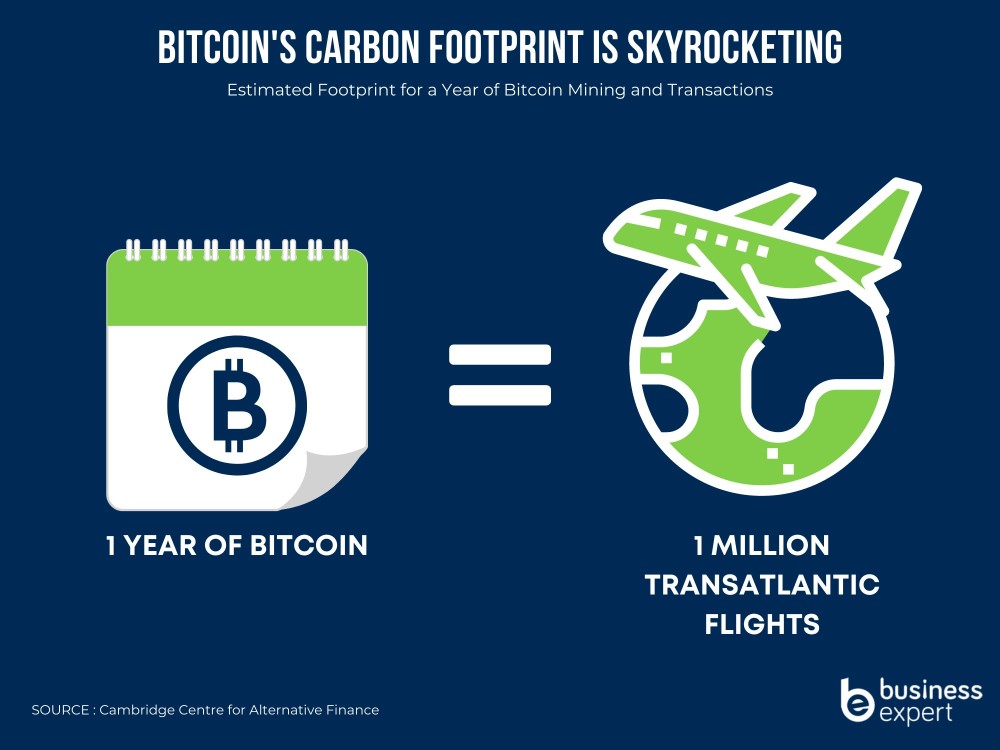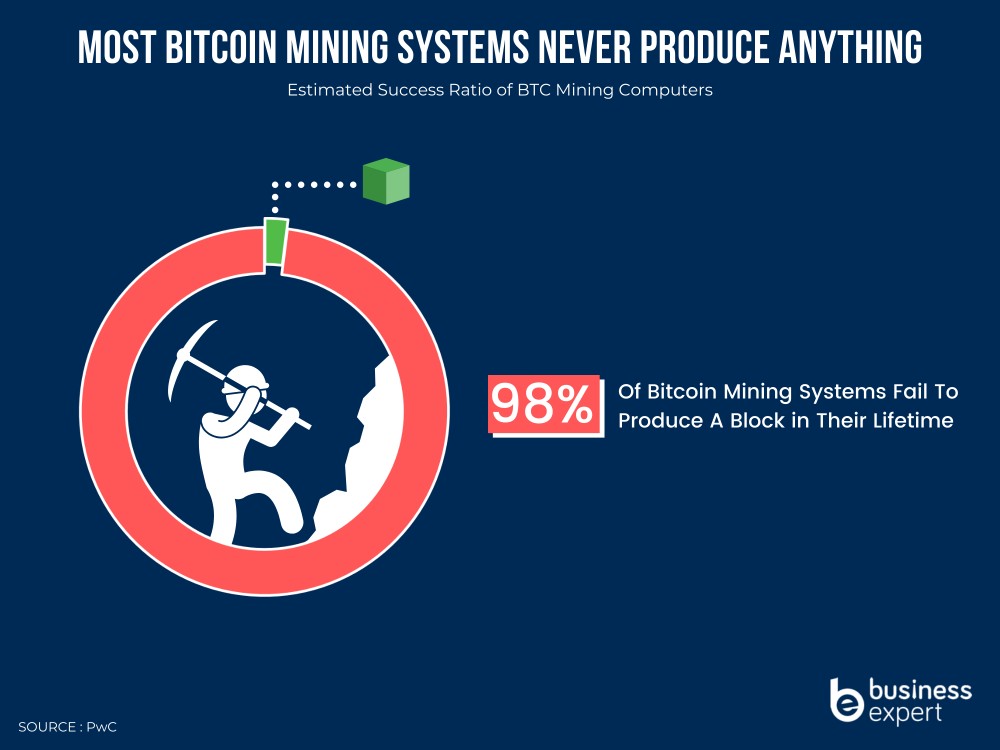
Does Crypto have a Carbon Footprint?
Once described as a ‘a techno-anarchist project’ by the Economist, Bitcoin completed its entry to the mainstream last month when Tesla, the world’s sixth most valuable company, announced an investment of $1.5 billion.
The arrival of this wave of institutional money is being widely interpreted as the beginning of a major portfolio diversification trend into cryptocurrency.
But while Bitcoin retains a whiff of its digital countercultural origins, the sheer size of its ecological footprint may come as something of a shock.
Last year Leo Fink C.E.O of BlackRock devoted his annual letter to investors to explaining that climate change has now put us “on the edge of a fundamental reshaping of finance.” Writing in the New Yorker, Bill McKibben from 350.org called the announcement “seismic” and “marked a watershed moment in climate history”.
Yet, within the same year Blackrock opened up two of it’s funds to investing in Bitcoin futures. Recent analysis suggests that cryptocurrency comes with a carbon emission ten times that of a conventional banknote.
With an energy use and thus greenhouse gas emission higher than any form of currency, the notion that Bitcoin exists merely as a kind of decentralised digital gold doesn’t tell the whole story.
“From a sustainability point of view, adding cryptocurrencies to a portfolio will make it less green” notes Gerald Moser, chief market strategist at Barclays Private Bank in Investment Today.
Bitcoin Uses More Electricity Than Many Countries

The Ecological Damage of BitCoin Mining
At the heart of BotCoin lies an online decentralized ledger that records transactions throughout a network. Approved transactions are called ‘blocks’ and when tied together these become a ‘chain’ hence, the term “blockchain.”
Bitcoin miners have the job of solving the mathematical problems which add individual blocks to the blockchain, a task which necessitates specialized computer hardware called application-specific integrated circuits, or ASICs.
However, Bitcoin mining is highly competitive, with 98% of miners (approximately 4 million global computer systems) failing to win the block, despite the huge electricity outlay.
The ecological footprint of Bitcoin is therefore created by running these powerful computer systems, via data centres, and the wider electrical grid. And it is inherently wasteful.
Any ecological footprint of Bitcoin therefore rests firmly upon the means of electricity production in the country where the mining occurs. And with between 50-65 of the mining happening in China, that means the large proportion comes via coal fired power stations.
A paper written by University of New Mexico researchers Andrew Goodkind (asst. professor, Economics), Benjamin Jones (asst. professor, Economics) and Robert Berrens (professor, Economics) estimates that “in 2018, every $1 of Bitcoin value created was responsible for $.49 in health and climate damages in the United States.”
Bitcoin’s Carbon Footprint is SkyRocketing

BitCoin Energy and E-waste Statistics
- The Cambridge Centre for Alternative Finance places the annual energy expenditure of Bitcoin at 120.37 TWH, with an upper limit estimate of 289.5 TWh – approaching that of the world’s twelfth largest national consumer, the UK (300.5 TWh)
- One Bitcoin transaction generates the CO2 equivalent to 706,765 swipes of a Visa credit card
- Each Bitcoin transaction uses around 657.39 kWh of electricity, the equivalent of 59 days of electricity for an average British household.
- It takes or spending 52,043 hours watching YouTube to reach the equivalent carbon footprint of a single transaction
- It takes double the energy to mine one dollars worth of BitCoin than it does gold,copper or platinum
- Bitcoin’s e-waste footprint of 10.71 kilotons rivals that of Luxembourg, since Bitcoin mining is done with specialized (singular purpose) hardware, which becomes obsolete roughly every 1.5 years.

Norway Sets the Trend for ‘Carbon Neutral’ Crypto
Since the profit from BitCoin mining comes from the space between the electricity costs of mining and the currently traded coin price, miners have traditionally set up in economies like China where electricity is cheap.
Sweden and Norway, however, are changing that paradigm.
Their existing hyrdoelectric structure has benefited from increased rainfall over the last decades, pushing their electricity costs to amongst the lowest in Europe (1/3 of Germany). It was little suprise then that, as of November 2020, Bitfury Holding BV, a Dutch blockchain company, announced a large investment in setting up in Norway.
Nordic BitCoins therefore offer the world’s first ‘carbon neutral’ coin offering, since the energy used is purely generated from sustainable sources.
In New York State, a natural gas producer Greenidge Generation has found another innovative solution to the problem of powering coin mining. Their excess capacity currently provides jobs for 8,500 of the latest generation miners from Bitmain and other manufacturers.
“Bitcoin is here to stay,” commented Sanna Setterwall, Corporate Sustainability Consultant at South Pole, “so it’s important to ensure that it is as green as possible. One step is to switch the electricity used to renewable energy, and perhaps Bitcoin could even act as a force of good in greening the grid faster. Here, large investors have a chance to act by influencing decision-makers. However, even if all Bitcoin mining would run on renewable energy, the carbon footprint would still be substantial, seen from a life-cycle perspective. In the long term, getting the attention to the 2nd and 3rd generation blockchains, with more energy efficient consensus mechanisms and further innovations, is key.”
